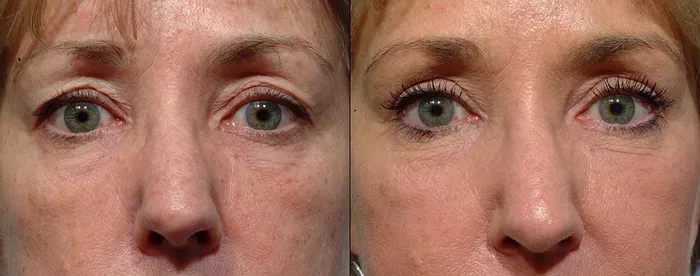In the vast landscape of eye care, an eyelid specialist emerges as a distinctive and indispensable figure, possessing specialized skills to address a spectrum of conditions related to the delicate structures surrounding the eyes. In this comprehensive exploration, we delve into the realm of eyelid specialists, uncovering their qualifications, the diverse range of conditions they manage, and the pivotal role they play in both functional and aesthetic aspects of ocular health.
Defining the Eyelid Specialist
An eyelid specialist, also known as an oculoplastic surgeon or oculofacial plastic surgeon, is a highly trained medical professional uniquely positioned at the intersection of ophthalmology and plastic surgery. This specialized expertise equips them with the knowledge and skills to manage a wide array of conditions affecting the eyelids, tear ducts, and surrounding facial structures. The dual qualification of an eyelid specialist ensures a comprehensive approach to both functional and cosmetic concerns related to the eyes.
Educational Journey
Becoming an eyelid specialist entails a rigorous and extensive educational journey. Aspiring professionals typically undergo medical training, obtaining a medical degree, followed by a residency in ophthalmology. What sets eyelid specialists apart is their pursuit of additional fellowship training in oculoplastic surgery. This focused training, often spanning one to two years, hones their abilities to diagnose and manage conditions ranging from eyelid malpositions to reconstructive surgery following trauma or surgery. The educational journey of an eyelid specialist is characterized by a commitment to excellence in both medical and surgical aspects of eye care.
Scope of Practice
Eyelid specialists navigate a diverse scope of practice encompassing functional and aesthetic concerns. On the functional front, they address issues such as ptosis (drooping of the eyelids), entropion, and ectropion (malpositions of the eyelids). Additionally, they play a pivotal role in managing eyelid tumors, tear duct disorders, and reconstructive procedures. On the aesthetic side, eyelid specialists perform procedures like blepharoplasty, commonly known as eyelid lift surgery, to enhance the appearance of the eyes and rejuvenate the surrounding facial features.
Diagnostic Prowess
The role of an eyelid specialist begins with precise diagnosis. They employ a range of diagnostic techniques, including meticulous physical examinations of the eyelids and surrounding structures. In complex cases, advanced imaging technologies such as ultrasound and MRI may be utilized to obtain detailed insights. This diagnostic prowess allows eyelid specialists to accurately identify conditions and tailor individualized treatment plans for their patients.
Surgical Expertise
One of the hallmarks of an eyelid specialist’s expertise lies in their surgical capabilities. Whether performing delicate procedures to correct malpositions, removing tumors, or undertaking reconstructive surgery, their surgical precision is paramount. Eyelid specialists blend their knowledge of ocular anatomy with plastic surgery techniques to achieve optimal results. These surgical interventions not only address functional concerns but also contribute to the aesthetic enhancement of the eyes and surrounding areas.
Cosmetic Considerations
While eyelid specialists excel in addressing functional concerns, they also showcase their artistry in cosmetic eyelid surgery. Blepharoplasty, a procedure aimed at rejuvenating the appearance of the eyes, involves the removal of excess skin, fat, or muscle. The delicate balance between achieving cosmetic enhancements and maintaining the natural look of the eyes requires a keen understanding of aesthetics—an aspect where eyelid specialists shine.
Collaboration within the Eye Care Community
The work of an eyelid specialist is inherently collaborative. They often collaborate closely with general ophthalmologists and other eye care specialists. The eyes are a complex organ, and conditions affecting the eyelids can have implications for overall ocular health. Eyelid specialists work hand-in-hand with their colleagues to ensure a holistic approach to patient care. This collaborative model extends to partnering with dermatologists, oncologists, and other medical professionals when managing conditions involving both the eyes and facial structures.
Reconstructive Challenges
Reconstructive surgery forms a significant aspect of an eyelid specialist’s practice. It involves restoring both the function and form of the eyelids after trauma, injury, or complications from previous surgeries. Whether repairing damage caused by an accident or addressing issues arising from prior surgical procedures, eyelid specialists bring their surgical skills to bear in achieving optimal outcomes. The goal of reconstructive surgery extends beyond aesthetics to ensure the proper functioning of the eyelids and surrounding structures.
Patient-Centered Care
In the realm of eyelid specialists, patient-centered care is paramount. Effective communication and empathy are integral components of their practice. Patients seeking care for eyelid-related concerns, whether functional or cosmetic, often present with unique goals and anxieties. Eyelid specialists prioritize open communication, ensuring that patients are well-informed about their condition, treatment options, and expected outcomes. This patient-centric approach fosters trust and collaboration, creating a supportive environment for individuals undergoing eyelid-related treatments.
Advancements in Technology
Eyelid specialists embrace technological advancements to continually refine their practice. Innovations in laser technology, minimally invasive techniques, and imaging modalities contribute to the evolution of eyelid surgery. These advancements enhance the precision, safety, and efficiency of surgical procedures. Staying abreast of technological developments allows eyelid specialists to offer state-of-the-art solutions to their patients, further elevating the standard of care.
Conclusion
In conclusion, the role of an eyelid specialist is a nuanced intersection of skill and compassion. From the intricacies of surgical procedures to the artistry of cosmetic enhancements, they navigate the delicate terrain of ocular health with precision. The dual expertise in ophthalmology and plastic surgery positions eyelid specialists as vital contributors to both functional and aesthetic aspects of eye care. Their commitment to excellence, collaborative spirit, and patient-centered approach make them indispensable figures within the broader eye care community. Eyelid specialists not only restore function and form but also contribute to the artistry of enhancing the windows to the soul.

